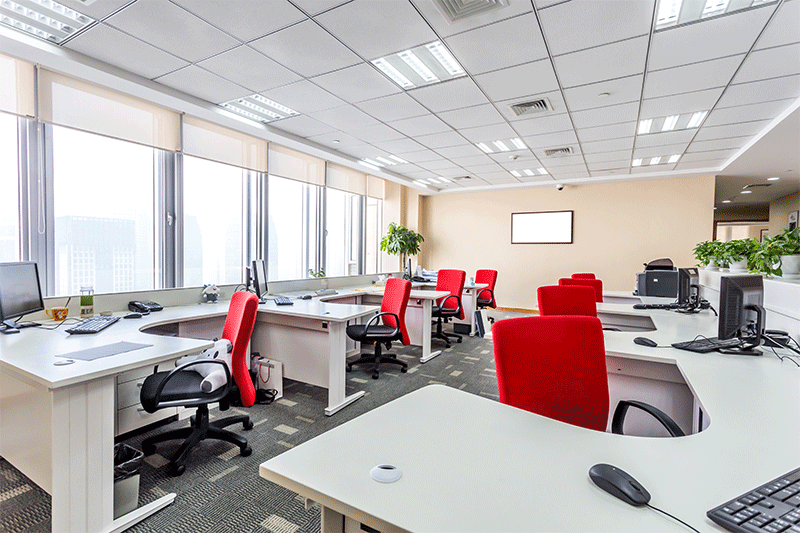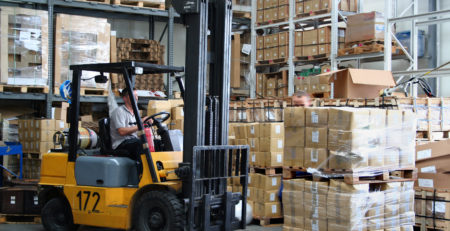What Are the Health & Safety Procedures in An Office Environment?
Every employer is tasked with the responsibility of providing an ideally healthy and safe environment for their staff. Whether you run a factory, an office facility or even a beauty salon, it is important to abide by the industry best practices for the health and safety of your workers.
The UK’s Health and Safety Work Act (HSWA) of 1974 states that the Health and Safety Executive with (local authorities) are responsible for enforcing the Act (and many other related Acts), as well as Statutory materials necessary for the work place. But providing a healthy and safe environment (HSE) is not just about obeying governmental policies, it is also about upholding your moral and ethical obligations to your staff and host community.
Do you have a system in place to guide your employees? Is there a hazard management program to mitigate mishaps at your work environment? Did you know that something as simple as a chair can impact productivity?
According to jasonl, the ergonomic design of office furniture contributes ultimately to how workers feel at the end of the day. While a well-designed set can provide comfort and increase creative output, a poorly-designed set can leave one feeling worn-out before closing hours.
This post will address important issues regarding the set up and evaluation of effective HSE standards.

The importance of health and safety for your business
Like production and quality, health and safety are a significant part of your business. They affect productivity, quality and your overall bottom-line. Without a proper HSE system in place, your business could experience severe losses, so it should be managed in much the same way you do other key areas of your business.
To run a successful business, you need to manage the quality of service or products you provide, and the productivity of your company. It is also critical to manage the health and safety of people who work for you. The process of all these dynamics are determined by your organisation and management system.
To manage your health and safety efficiently, you must:
- Set your health and safety goals, and devise a plan to achieve them
- Assign the responsibility to a specific individual(s)
- Equip those responsible for this task with resources to do the job
- Evaluate your results to ensure you are meeting these goals
During this process, it is essential to write down your activities and involve your employees in the process. Continue checking on them to determine the progress so far. Documenting your process, consulting with workers and measuring and adjusting your system means your organisation will be more effective.
The long-term success of health and safety plans in the workplace depends on how committed the office staff are to its on-going process. You have a better chance of gaining this commitment if management involves the employees. A good idea also is sending a health & safety document where employees have a read of the health and safety procedures in your work place. They can then send it back to you signed and you can fax it easily over your computer. This way, you as an employer are aware that each employee are aware of the health and safety procedures in the workplace.
According to the Occupational Health and Safety best practices, management should provide and maintain as far as is practicable for workers, an office environment that is safe and without health risks.
Some ways set out to meet this obligation include:
- Providing and maintaining safe workshops and equipment that work
- Arranging a safe environment for people handling these equipment and substances
- Providing an office environment that is safe
- Providing sufficient welfare amenities and;
- Providing your staff with sufficient information on hazards, including training, guidelines and supervision that allows them work without and health risks or danger.

Responsibility for employees
Employers should treat their independent contractors the same way they do their employees about health and safety. This is especially if they are working in your office on matters under your control.
Employers are required to;
- Monitor the health of their workers
- Keep health records and information relating to the health and safety of their workers
- Hire qualified professionals to provide counselling on health and safety of their staff
- Delegate a high-ranking official to be their representative in matters of health and safety
- Check the conditions of any work environment under their management and control
- Provide health and safety information to their staff, in respective languages, including mentioning the name of the individual a worker can complain to or make an inquiry about health and safety.
The role of employees in managing their own health and safety
So far, we have discussed the responsibility of employees and management at the workplace, it would appear as if the workers themselves have no role to play. Far from it, workers are expected to participate actively in monitoring their environment and reporting to the necessary company authorities. When something is amiss, or threatens the health and safety of the general workplace, it is also their duty bring it to notice.
For example, a fire drill or marshal team should be appointed to look out for incidents that can cause vulnerability in a fire. This includes checking that fire extinguishers are not expired and safety materials are replaced regularly. Of course, in larger organisations, this responsibility may be outsourced, but it helps to ensure a regularly rotated team of in-house staff are tasked with this responsibility.
Other health and safety responsibilities of employees
- Taking charge of their HSE learning or training programmes
- Reporting suspicious activity to appointed HSE marshals
- Acting sustainably to prevent hazards in the workplace (obey non-smoking signs)
- Employees are also expected to be observant about their environment
- Disposing dangerous materials properly, adhering to company HSE policies
Speaking of policies, every organisation is mandated to have a manual for HSE procedures. Staff (especially those in sensitive departments) are to read it and ensure they observe the practices judiciously.

Why you need a general health and safety policy
A comprehensively prepared health and safety policy clearly emphasises the health and safety objectives, and the company’s dedication to enhancing health and safety performance. It also recognises the employer’s legal obligations.
Preparing a HSE policy is an essential, practical step towards providing and maintaining a safe work environment that is devoid of risks.
No matter your industry, whether it is manufacturing, research or architecture, a robust HSE policy will ensure your staff are adequately taken care of. When management involves the workers in every stage of its health and safety considerations, it improves the chances of success in its implementation.












